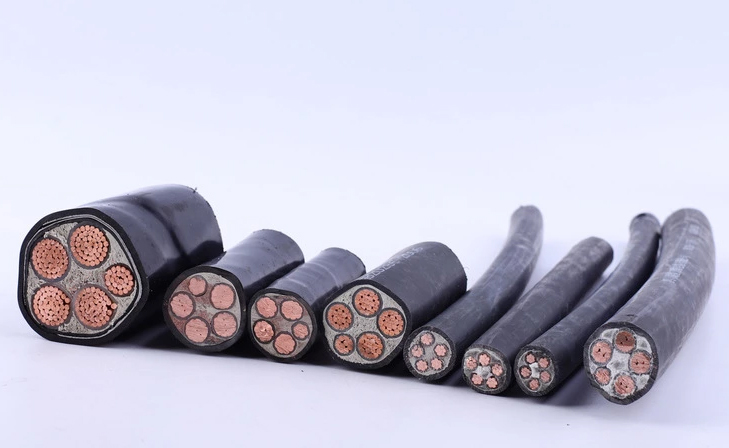
Wire and cable are indispensable kinds of electrical transmission and control equipment in modern industry and life, with a wide range of applications, which can be said to cover almost all the fields that need electrical transmission and control.
The following ZMS cable editor will introduce you to the scope of application of wire and cable.
Low Smoke Halogen Free, abbreviated as LSZH, LSOH, LS0H, LSFH, and OHLS, is a material classification for wire sheathing in the wire and cable industry.
Low smoke and halogen-free wire sheathing is composed of thermoplastic or thermoset materials that have low smoke emission when heated and do not contain halogens of their own.
Low smoke and halogen-free materials reduce the amount of toxic and corrosive gases produced when they burn.
Low smoke and halogen-free materials are often used in poorly ventilated environments such as aircraft, train cars, or ships.
Low smoke and halogen-free materials are also commonly used in the railroad industry where there are high voltage lines underneath the railroad or signal lines that transmit the location of the train.
The use of low-smoke and halogen-free materials also reduces the accumulation of toxic gases when the line is damaged by fire or a short circuit.
For example, in the railroad industry or shipbuilding industry, where it is important to protect personnel and equipment from exposure to toxic and corrosive gases, the use of low smoke and halogen-free materials for the outer layer of wire and cable is required in these applications.
Overhead cables, known as overhead insulated cables, are overhead wires with an insulation layer and protective sheath, manufactured using a special cable similar to the production process of cross-linked cables.
Bare wire erected lines, in the more wooded areas, often the erection and maintenance of lines and greening and forestry produce a great deal of shield.
The use of overhead cables can reduce the felling of trees, but also reduce the contradiction with the greening, forestry, and other departments, to protect the ecological environment.
At the same time beautify the cityscape, and reduce the line ground fault.
In the old industrial area, due to environmental protection can not meet the standard, metal processing enterprises, often have flying metal dust floating in the wind.
In the polluted areas of thermal power plants and chemical plants, causing short-circuit and grounding faults in overhead distribution lines.
Salt spray on the bare wire corrosion is quite serious so the bare wire tensile strength is greatly reduced.
When encountering wind and rain, it triggers wire fracture, causing line short circuits and grounding accidents and shortening the service life of the line.
The use of an overhead cable can better prevent salt spray corrosion.
Because the conductor of the overhead cable has a layer of insulation protection, can reduce the corrosion of salt spray on the conductor, delaying the aging of the line, and extending the service life of the line.
Overhead cable because there is a layer of insulation protection, can reduce the line lightning, even if there is lightning, the impact will be much smaller. In the lightning area, the use of bare wire erected lines, and line insulation generally decreases faster, often burst grounding accidents.
After being replaced with overhead insulated conductors, can reduce the grounding fault outage time.
Submarine fiber optic cable, also known as submarine communication cable, is a wire wrapped with insulating material, laid on the seabed, used to set up telecommunications transmission between countries.
A submarine fiber optic cable system is mainly used to connect fiber optic cable and the Internet, it is divided into two major parts: onshore equipment and underwater equipment, submarine fiber optic cable is the most important and vulnerable part of the underwater equipment.
Applications of submarine cables
In addition to marine transmission and submarine research, submarine cables also have a wide range of applications in the field of marine transportation.
Because ships can't communicate with each other directly, they have to go through some means to achieve it.
Submarine fiber optic cable networks can enable maritime communication by transmitting optical signals to shore-based communication towers.
With the existence of submarine cables, it is possible to achieve fast communication exchange with other ships at sea.
The submarine cable also has a wide range of applications in military applications. It can be used to achieve communication between warships and military facilities at sea, and the signals are encrypted to ensure their security.
In the field of tourism, submarine cable also plays an important role, it can provide tourists with a variety of sightseeing experiences, such as deep-sea diving, underwater adventure, marine science, and so on.
To sum up, submarine cables have played an increasingly important role in human society.
As technology advances and demand increases, its role and applications will become more and more extensive and complex.
Mineral insulated cable is a cable with a copper sheath wrapped around a copper conductor core and magnesium oxide powder as inorganic insulation material to isolate the conductor and sheath, the outermost layer can be selected with an appropriate protective jacket as required.
Mineral-insulated cables have been widely used in high-rise buildings, petrochemical, airports, tunnels, ships, offshore oil platforms, aerospace, iron and steel metallurgy, shopping centers, parking lots, and other occasions.
The above is the scope of application of several commonly used cables, I hope your cable purchase has some help. If you still have any questions, you can consult us, we will have a professional cable sales representative to solve your questions.